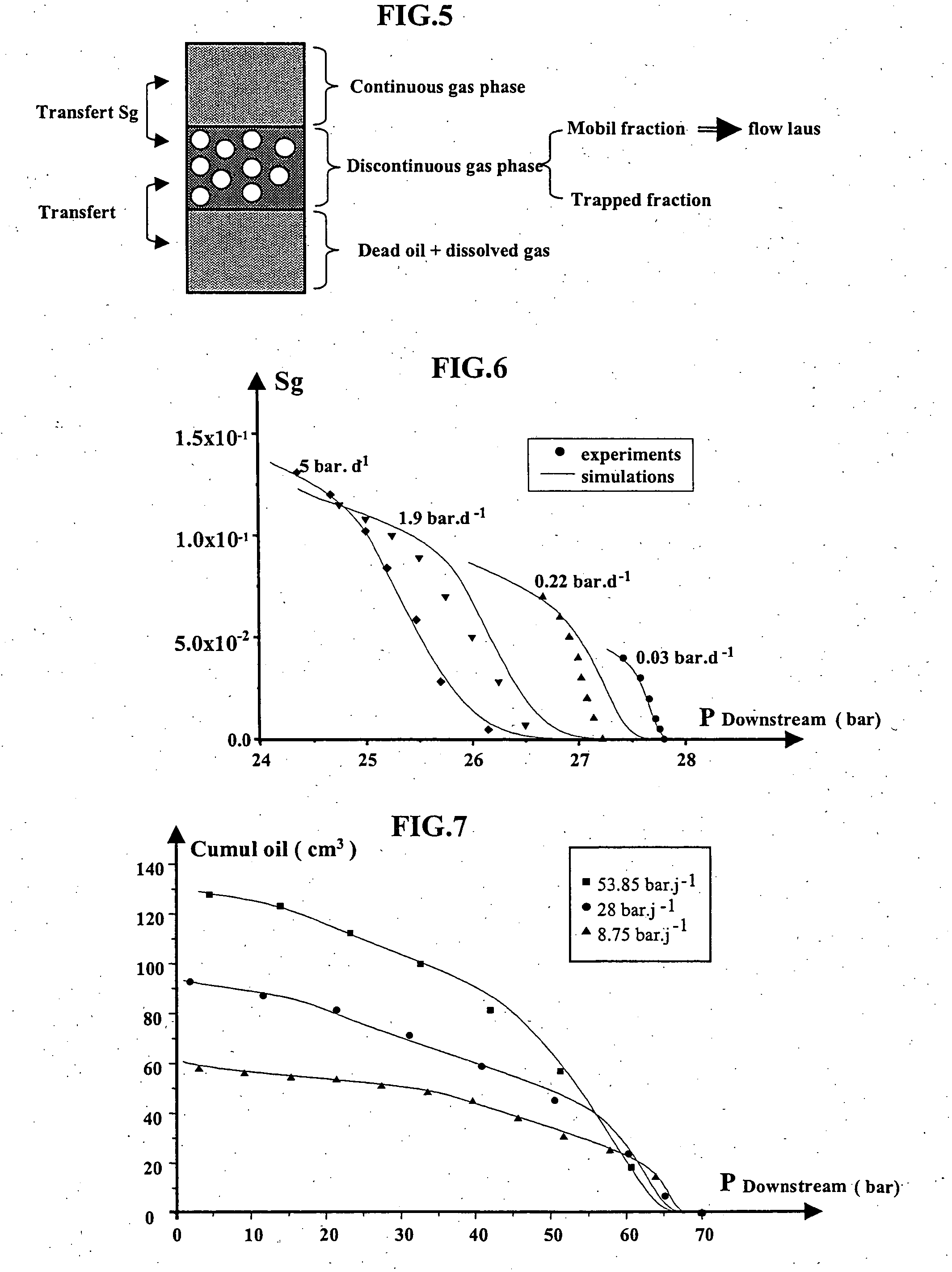Method for modelling the production of hydrocarbons by a subsurface deposit which are subject to depletion
a technology of hydrocarbon production and subsurface deposit, which is applied in the direction of seismology for waterlogging, borehole/well accessories, instruments, etc., can solve the problem that the model of the production by depletion poses a specific problem, the relative permeability kr measured in the laboratory on samples containing viscous oils cannot be directly used in numerical reservoir simulation, and the use of a large number of parameters that cannot be directly measured
- Summary
- Abstract
- Description
- Claims
- Application Information
AI Technical Summary
Benefits of technology
Problems solved by technology
Method used
Image
Examples
Embodiment Construction
[0029] A first important point of the method of the invention relates to the “off-equilibrium” aspect of the light component transfer. It is based on modelling of the gas phase nucleation allowing prediction of the density of the bubbles and the pressure at which they appear. A law of distribution of the number of pre-existing “nuclei” or microbubbles as a function of the pressure is suggested. This empirical law N(P) takes into account the properties of the solid (surface roughness), the properties of the fluids and the physico-chemical interactions between the fluids and the solid (wettability for example). A relation form, for example exponential or power law, is imposed from the published measurements and the few parameters of this law (threshold pressure, exponent of the power law) are determined from the experiment by calibration. This law is considered valid at the laboratory stage as well as at the reservoir stage. From knowledge of this law N(P) and of the thermodynamic pro...
PUM
 Login to View More
Login to View More Abstract
Description
Claims
Application Information
 Login to View More
Login to View More - R&D
- Intellectual Property
- Life Sciences
- Materials
- Tech Scout
- Unparalleled Data Quality
- Higher Quality Content
- 60% Fewer Hallucinations
Browse by: Latest US Patents, China's latest patents, Technical Efficacy Thesaurus, Application Domain, Technology Topic, Popular Technical Reports.
© 2025 PatSnap. All rights reserved.Legal|Privacy policy|Modern Slavery Act Transparency Statement|Sitemap|About US| Contact US: help@patsnap.com



